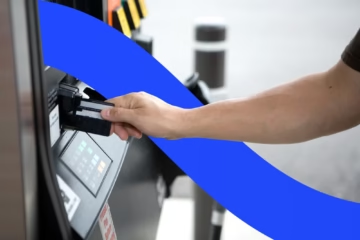In today’s digital-first world, engaging with consumers requires innovative approaches that are both efficient and interactive. One tool that has gained significant traction for its ease of use and versatility is the QR code. By simply scanning a code with a smartphone camera, users can instantly access information, make purchases, receive offers, and much more. As businesses look to connect with consumers in meaningful ways, QR codes offer a unique opportunity to drive engagement and boost sales.
Understanding the Rise of QR Codes
The concept of QR codes is not new; they first emerged in Japan in the 1990s as a way to track automotive parts. However, the proliferation of smartphones and the increased focus on contactless interactions, especially during the COVID-19 pandemic, have propelled QR codes into mainstream use. Now, they’re not just a tool for logistics but are widely used in marketing, retail, hospitality, and other industries to improve the customer experience.
Benefits of Using QR Codes
QR codes bring a range of advantages to businesses, especially those looking to streamline and enhance customer interaction. First, QR codes are incredibly versatile. They can link to a webpage, initiate a payment, download an app, or provide contact information. By embedding QR codes in physical locations like billboards, product packaging, or in-store displays, companies can blend physical and digital experiences seamlessly. This flexibility enables businesses to reach users in various settings, bridging the online and offline divide.
Additionally, QR codes are cost-effective. They are relatively inexpensive to create and can be generated using a QR code creator, which allows companies to personalize their codes with branding elements. Many QR code creators now offer customization options such as color, logo integration, and shapes, making them a powerful branding tool. With these enhancements, companies can ensure that QR codes align with their brand image while making them more noticeable and attractive to customers.
Engaging Customers with QR Code Offerings
QR codes provide numerous opportunities to engage customers and enhance their journey. For instance, a retail store can use QR codes to give customers additional information about a product, such as specifications, customer reviews, and usage tips. Restaurants, meanwhile, can embed QR codes in menus to allow customers to view detailed nutritional information, place an order, or pay directly from their smartphones. These interactions create convenience and encourage customers to spend more time engaging with the brand.
Another popular way to drive sales with QR codes is through exclusive offers. By scanning a code, customers can unlock special discounts or promotions, which can encourage repeat visits and brand loyalty. Limited-time offers tied to QR codes also provide a sense of urgency, motivating customers to act quickly.
Using Analytics to Track Success
An important advantage of QR codes is that their usage can be tracked and analyzed. Businesses can monitor how many times a QR code is scanned, when, and where. This data provides valuable insights into customer behavior, helping brands optimize their campaigns and better understand which strategies are working. For example, if a retail chain notices that QR code scans spike on weekends, it could schedule more promotions for those days to maximize engagement.
Tips for Implementing QR Codes Effectively
For businesses looking to get started, here are some tips for implementing QR codes effectively:
- Use a Reliable QR Code Creator: Choose a QR code creator that allows you to customize your codes and offers analytics capabilities.
- Ensure Visibility and Accessibility: Place QR codes in locations where they are easy to find and scan. Ensure they are large enough to be scanned from a comfortable distance.
- Create a Clear Call to Action: Inform customers of what they can expect by scanning the code. Clear instructions like “Scan to Unlock an Offer” or “Scan for Product Details” can improve engagement rates.
- Incorporate Branding Elements: QR codes with brand logos and colors are more likely to capture attention and reinforce brand identity.
- Test and Monitor Performance: Run tests to ensure codes work properly across different devices and track the analytics to understand their effectiveness.
Conclusion
QR codes offer a powerful way to enhance customer engagement, drive sales, and gain insights into consumer behavior. They are easy to implement, customizable, and highly adaptable to different industries and use cases. By leveraging QR codes strategically, businesses can create a seamless bridge between digital and physical experiences, enabling them to connect with customers in dynamic and memorable ways. In a world where digital interactions are key, QR codes stand out as a versatile and valuable tool for brands looking to leave a lasting impression.



